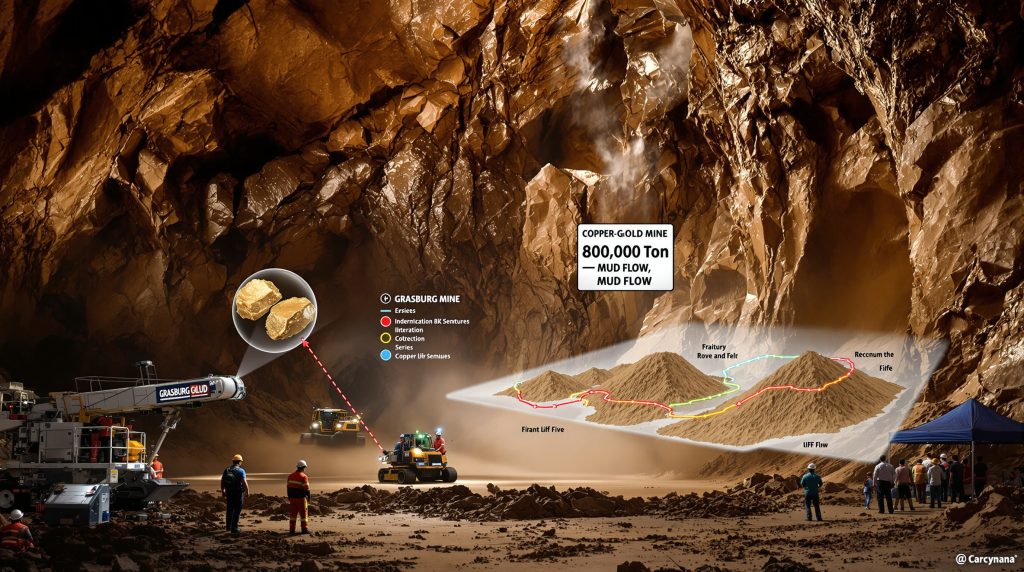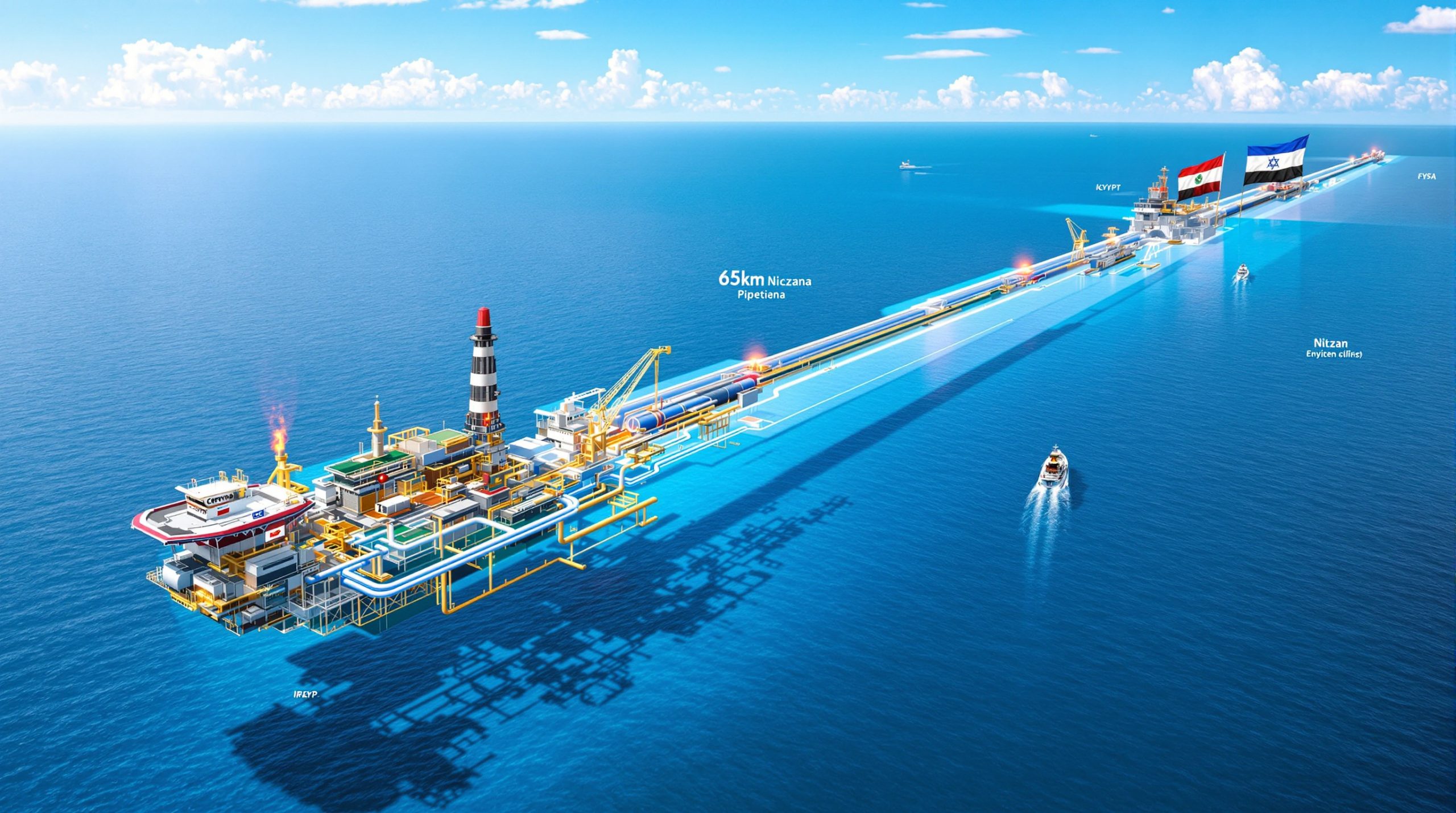Ongoing Search for Five Trapped Miners at Indonesia's Grasberg: What We Know
The search operation at Indonesia's Grasberg copper and gold mine continues as rescuers work tirelessly to locate five workers who remain trapped underground following a catastrophic mud flow disaster. Despite arduous conditions and numerous technical challenges, rescue teams remain determined in their efforts to reach the missing miners in what has become one of the most difficult mine rescue operations in recent years.
What Happened at Indonesia's Grasberg Mine?
On September 8, 2025, disaster struck at the Grasberg mine when approximately 800,000 metric tons of wet material flooded into operational areas. The massive mud flow trapped seven workers underground, creating an emergency situation that immediately halted all mining activities at one of the world's largest copper and gold mining operations.
As of October 2, 2025, rescue teams have recovered the bodies of two workers, while the search for five trapped Grasberg workers continues after more than three weeks. The incident has triggered significant concerns about mine safety protocols and emergency response capabilities in large-scale mining operations.
The mud flow's sheer volume created exceptionally difficult conditions from the outset. Unlike typical mine collapses where rescue teams might contend with fallen rock or structural failures, this disaster involved semi-liquid material that continued to shift and move, complicating access to affected areas.
Indonesian authorities immediately initiated emergency protocols following the incident, with Freeport Indonesia mobilizing specialized rescue teams with experience in similar mining disasters.
Why Is the Rescue Operation So Challenging?
The rescue effort at Grasberg faces multiple complex obstacles that have severely hampered progress. According to mining safety experts, mud flow rescue operations are among the most technically challenging scenarios in mining disaster response.
"This high-risk rescue process also faces significant challenges due to the movement of wet material," explained Freeport Indonesia spokesperson Katri Krisnati in an official statement. This ongoing movement creates unstable conditions that threaten both the trapped miners and rescue personnel.
As rescue teams dig deeper into the affected areas, air quality and circulation have become increasingly problematic. The combination of limited ventilation and the risk of secondary collapses has forced rescuers to proceed with extreme caution, significantly slowing their progress.
The remote location of the Grasberg mine, situated in Indonesia's Papua province at elevations reaching 4,270 meters (14,000 feet) above sea level, creates additional logistical hurdles. The mountainous terrain makes it difficult to transport specialized heavy equipment necessary for the rescue operation.
Mining rescue specialists note that mud flows present unique challenges compared to other mine disasters because the material can continue moving and settling for days or weeks after the initial event, potentially closing off newly created access routes and complicating search patterns.
How Are Rescuers Approaching This Complex Operation?
Rescue teams have implemented a multi-pronged technical approach to reach the trapped miners. According to official updates, they have excavated two separate access routes to increase the chances of reaching survival zones where workers might be located.
To minimize risk to additional personnel, rescuers are deploying heavy equipment with remote control systems that can operate in the most dangerous areas. This technology allows them to clear debris and create access paths without exposing human operators to unstable conditions.
Communication attempts with potentially trapped miners have included drilling small-diameter boreholes to potential survival chambers, deploying acoustic detection equipment, and using specialized cameras to search void spaces where air pockets might exist.
The rescue operation has drawn on international expertise, with mining rescue specialists from Australia, Chile, and the United States providing technical guidance based on experiences from other complex mine rescue operations.
Ventilation specialists are working to improve air circulation in deeper sections of the affected area, using portable systems to pump breathable air into spaces where miners might be located. This critical work helps maintain any potential survival zones while also creating safer conditions for rescue personnel.
What Is the Global Impact of the Grasberg Mine Shutdown?
The complete suspension of operations at Grasberg, one of the world's largest copper producers, has sent significant ripples through global commodity markets. Copper prices experienced upward pressure immediately following the announcement of the disaster and force majeure declaration.
Freeport-McMoRan has formally declared force majeure on contracts related to Grasberg production, signaling to customers and markets that the company cannot fulfill its contractual obligations due to circumstances beyond its control. The company has also lowered its sales estimates for the coming quarters.
The timing of this supply disruption is particularly significant as global copper demand continues to grow, driven by the expanding electric vehicle market and renewable energy sector. Industry analysts estimate the Grasberg shutdown could affect approximately 1-2% of global copper supply if extended for several months.
Metals market analysts suggest that while copper inventories can absorb short-term supply disruptions, a prolonged shutdown at Grasberg could trigger more substantial price movements, especially if combined with other global supply challenges. Recent copper price prediction models may need revision due to this unexpected disruption.
The incident highlights the vulnerability of critical mineral supply chains to unexpected disruptions and may accelerate efforts to develop alternative copper sources in more stable regions, according to mining industry publications.
Who Operates Grasberg and What Makes It Significant?
The Grasberg mine is operated by PT Freeport Indonesia, a subsidiary of U.S.-based mining giant Freeport-McMoRan Inc. Following a complex series of negotiations with the Indonesian government in recent years, ownership was restructured to give Indonesia's state-owned mining company a majority stake, while Freeport-McMoRan maintains operational control.
Grasberg stands among the world's most productive mining operations, consistently ranking in the top three global copper mines by output volume. Beyond copper, the mine also produces significant gold reserves, making it a dual-commodity powerhouse in the global mining landscape. Recent gold price analysis suggests this production disruption could impact precious metals markets as well.
The mine's economic significance extends far beyond the operation itself. It serves as a crucial source of revenue for both the Indonesian government and the regional economy of Papua province. With a workforce exceeding 30,000 people (including contractors and support services), Grasberg represents one of the largest employers in the region.
From a geological perspective, Grasberg is remarkable for its high-grade ore bodies that allow for efficient extraction of both copper and gold. The mine utilizes both open-pit and underground mining methods, with recent operations focusing increasingly on underground development as the operation matures.
The mine's remote location presents both challenges and strategic advantages, with significant infrastructure investments required to transport materials and finished products through difficult terrain.
How Has This Disaster Affected Local Communities?
The impact of the Grasberg disaster extends deeply into surrounding communities, particularly those with direct connections to the trapped miners and the broader mining operation.
Freeport Indonesia has established comprehensive support services for families of the trapped workers, including regular briefings on rescue progress, psychological counseling, and financial assistance during this extended crisis period. Company officials have maintained daily contact with family members to provide updates on the ongoing rescue efforts.
Local community leaders have organized prayer services and vigils to support the families of missing miners, demonstrating the close ties between the mine and surrounding communities. Religious leaders from various faiths have provided spiritual support to affected families.
The operational shutdown has created economic ripple effects throughout the region, as businesses that supply goods and services to the mine face reduced demand. Local officials have expressed concern about the potential for longer-term economic impacts if the mine remains closed for an extended period.
Environmental monitoring teams are assessing potential impacts from the mud flow, with particular attention to water systems that might be affected by sediment or mine-related materials. Community concerns about environmental consequences have prompted calls for transparent reporting on any potential contamination.
What Safety Measures Could Prevent Similar Incidents?
Mining safety experts point to several critical preventive measures that could reduce the risk of mud flow disasters in similar mining operations. Enhanced geological monitoring using advanced technologies can help identify potential instability before catastrophic failures occur.
Improved water management systems represent a primary defense against mud flows in mining operations. These include robust drainage infrastructure, continuous monitoring of water accumulation, and strict protocols for addressing unusual water patterns that might indicate developing problems.
Early warning systems that combine real-time ground movement detection with automated alerts could provide crucial minutes or hours for worker evacuation before a major failure. Such systems increasingly incorporate AI and machine learning to identify subtle changes that might precede a catastrophic event.
Regular emergency response drills specifically focused on mud flow scenarios can significantly improve worker survival rates by ensuring everyone knows evacuation routes and safety protocols. These drills should include testing of emergency communication systems and backup breathing apparatus.
Industry best practices increasingly call for enhanced barriers and containment systems between high-risk areas and active mining zones, especially in regions with high precipitation or complex hydrological conditions.
The mining industry's growing focus on digital transformation offers new opportunities for safety enhancement through remote monitoring, automated systems, and reduced human presence in the highest-risk areas of mining operations. These industry evolution trends are becoming increasingly important for worker safety.
When Might Grasberg Resume Operations?
Freeport officials have emphasized that rescue operations remain the absolute priority, with no timeline established for resuming mining activities. The company has stated that a comprehensive safety assessment will be required before any production can restart.
Mining analysts suggest that operations are unlikely to resume at full capacity for several months given the extent of the mud flow and the complex remediation work that will be required once rescue operations conclude. Areas directly affected by the disaster may remain closed for significantly longer periods.
The resumption timeline will depend on multiple factors including the completion of the rescue operation, comprehensive geological stability assessments, potential regulatory reviews by Indonesian authorities, and implementation of enhanced safety measures to prevent similar incidents.
Financial analysts tracking Freeport-McMoRan have noted that the company's diversified portfolio of global mining assets provides some buffer against the financial impact of the Grasberg shutdown, though extended closure would have increasing significance for quarterly results.
Industry observers note that the high-profile nature of this disaster may result in increased regulatory scrutiny of mining operations throughout Indonesia, potentially affecting the timeline for resumption of activities at Grasberg and other drilling programs in the country.
FAQ: Critical Questions About the Grasberg Mine Disaster
What are the survival chances for the trapped miners?
Survival duration depends on multiple factors including access to air pockets, availability of water, temperature conditions, and presence of injuries. In ideal scenarios with suitable air pockets, miners have survived for two weeks or more in previous incidents. However, survival prospects typically diminish significantly after the first week unless miners have access to adequate air, water, and a relatively stable environment.
How do mud flows occur in underground mining operations?
Mining mud flows typically result from a combination of factors including excessive water accumulation from rainfall or underground sources, disturbance of unstable geological formations, inadequate drainage systems, and structural failures in containment infrastructure. Climate change has increased the frequency of extreme weather events that can trigger such incidents in vulnerable mining regions.
What support are families receiving during this crisis?
Families of the trapped miners are receiving comprehensive support including regular briefings on rescue progress, psychological counseling services, temporary accommodation near the mine site, and financial assistance. Company officials maintain direct contact with family representatives to ensure transparent communication throughout the rescue operation.
How does this compare to other major mining disasters?
While each mining disaster has unique characteristics, the Grasberg incident shares similarities with other major events involving trapped miners, such as the 2010 Copiapó mining accident in Chile where 33 miners were trapped for 69 days before being rescued. However, the massive volume of mud involved (800,000 metric tons) presents distinct challenges compared to typical mine collapses or flooding events.
What communication methods are being used to locate survivors?
Rescuers are employing multiple technologies to detect potential survivors, including drilling small-diameter boreholes to potential survival chambers, using acoustic detection equipment that can identify sounds of movement or tapping, deploying specialized cameras that can search void spaces, and utilizing thermal imaging equipment that might detect body heat signatures in accessible areas.
Through this difficult and technically challenging rescue operation, the mining industry is once again reminded of the critical importance of safety protocols, emergency response capabilities, and the human cost of mining disasters. As the search for five trapped Grasberg workers continues, both the local community and the global mining industry watch with hope that against difficult odds, the missing miners might be found alive. Future mineral exploration insights may be shaped by the lessons learned from this tragic incident.
Ready to Discover the Next Major Mining Opportunity?
Stay ahead of the market with real-time alerts on significant ASX mineral discoveries through Discovery Alert's proprietary Discovery IQ model, which transforms complex mining data into actionable investment insights. Visit the Discovery Alert discoveries page to understand how major mineral findings, unlike the tragic Grasberg situation, can generate substantial returns for well-positioned investors.




